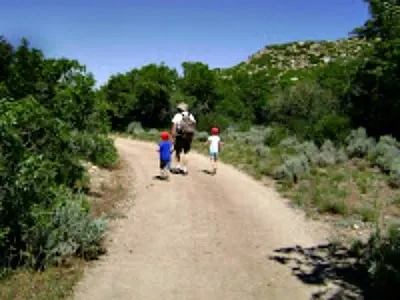Nowadays, it’s easy to place Mother Nature’s majesty and the distractions of modern technology at opposite ends of the experiential spectrum. We rightfully bemoan the fact that children (and adults, too) are spending less time directly engaged with primal phenomena–rivers, animals, rainstorms, sunsets, wildflowers–because of their addiction to screens and cyberspace.

But it’s also worth noting that modern-day mobile technology offers fantastic potential for learning more about the natural world and gathering field data. As recently as the 2000s, a nature walk necessitated lugging one (and often more) bulky field guides, even textbook-sized plant-taxonomy tomes, to have the tools available to identify species and other natural features encountered. A smartphone or tablet now stores the information of multiple field guides in its lightweight, handheld package. That means a mobile device–besides distracting you with social media, headlines, and silly games–represents a fantastic leap forward in nature education and citizen science (Zooniverse).
Handy Handbook Apps for Fun-Filled Nature Field Trips
Here’s a roundup of some excellent apps for engaging with and interpreting the natural world: ideal for all-ages forays into the fields, woods, mountains, and deserts–all those natural spaces that, even in our computer-dominated world, still so inspire and sustain us.
Map of Life
This ever-expanding app provides you with geographically specific data on plants and animals you might run into in your current neck of the woods. Use it to discover which plants and animals–from butterflies to conifers–are in the vicinity; the Map of Life database includes better than 30,000 species from around the globe. You can also upload and share your observations, making them accessible to friends and family as well as professional scientists.
The Sibley eGuide to Birds
David Allen Sibley’s Sibley Guide to Birds made enormous waves in North American birding when it was first published back in 2000, and now its treasure-trove of gorgeous (and highly accurate) paintings, detailed field mark information, and much more is available in app form for a number of mobile platforms. The app goes beyond the print version in its inclusion of better-than-playable 2,300 birdcalls and songs, its refined search functions, and the ability to maintain your own personal digital field notes.
MyNature Animal Tracks
In the case of many critters–most carnivores, for instance, as plus nocturnal mammals in general–you’ll hardly ever luck out with an actual sighting. Finding their tracks or scat (i.e., poop), however, can be nearly as exciting: like finding the trace of a ghost. MyAnimal Animal Tracks helps you identify paw- and hoofprints through a searchable database; the iOS version also includes information on scats.
iNaturalist
This powerful app connects you and your observations with a worldwide community of scientists and naturalists. Post a photo and description of something you’ve run into out there–a beetle, a bloom, an animal track–and crowdsource its identity from that vast and knowledgeable community. Besides solving nature mysteries on the trail, iNaturalist also turns your afternoon ramble into a useful exercise in citizen science: The info users upload into the system provides a source of real-time biological and ecological data.
Leafsnap
While this free app (iOS) only covers Eastern Canada and the Northeastern United States, its innovative technology holds much potential for other regions. The software–the result of collaboration between scientists at Columbia University, the University of Maryland, and the Smithsonian Institution–can identify a tree species based on a photograph you take.
Weather LiveFree
A high-quality weather app should be part of any naturalist’s toolkit. Weather Live Free delivers the current conditions, up-to-date forecast, and other meteorological data for sites all over the world. Besides keeping you abreast of weather developments while you’re out looking for bugs and birds, the app also helps deepen your connection to place by shedding light on atmospheric goings-on–just as influential on an ecosystem as biological and geological factors.
Flyover Country
Now, you can interpret the physical landscape below you during an airplane flight. Tracking your flight path via GPS, Flyover Country provides a host of offline information and maps on geological points of interest (such as fossil sites) below you. The National Science Foundation-funded app’s not limited to window seats 30,000 feet up: You can also use it on the trail or the highway.
Other excellent field guide apps include Fungipedia (for identifying mushrooms and other fungi), Peakfinder (which labels the peaks on your local skyline), and Project Noah (similar to iNaturalist in use and purpose). Crucially for field situations, most of these apps work offline as long as you’ve downloaded the necessary libraries.
Now hit the trails (or the flyways) and commune with Mother Nature!
Lilly Pearce enjoys exploring down by the river with her dogs and 77-year-old daughter, the teens now being too old to enjoy such activities with Mom! She writes about parenting, her favorite apps and more.
